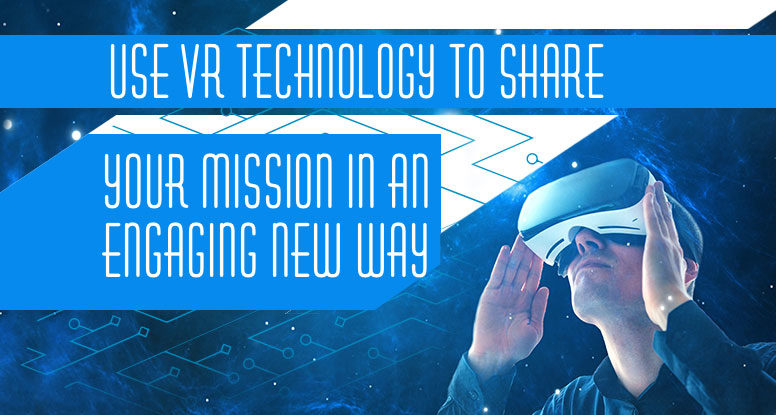
Use VR Technology to Share Your Mission in an Engaging New Way
Virtual reality (VR) technology has been around in the mainstream for about four years. Still, it has been within the past year that the use of the technology has multiplied exponentially. For those who may be unfamiliar with virtual reality, in basic terms, it is a computer-generated simulation of a 360-degree environment. A user can interact with the simulated environment and have a full sensory experience, usually with the help of a device like a helmet or a headset (though as the technology evolves, this could change in the next few years).
There are currently four different levels of VR:
- Using apps on your mobile device to change the view in front of you and engage with simulated content. PokemonGo and SnapChat are two great examples of this most basic level of VR.
- Fixed perspective VR using a headset.
- Immersive VR using a headset.
- Augmented reality. Holograms and other things are being projected around you. Microsoft’s new HoloLens technology is a current example.
VR’s 360-degree video enables organizations to tell a story in a way unlike ever before. As the price for this technology goes down, more organizations can begin creating immersive VR content to tell their stories. In a recent panel discussion, the Communications Network’s D.C. local group explored how two nonprofit organizations are successfully creating VR content.
World Wildlife Fund
Terry Macko, Senior Vice President of Marketing and Communications for the World Wildlife Fund, outlined how the WWF is using mobile apps to move them into the VR landscape. One of the biggest challenges of cultivating WWF’s membership base has been taking people to the places they’re helping. The app aimed to leverage mobile devices to allow people to experience endangered animals in their natural habitat. The app contains several VR features, including:
- Simulated Facetime with a gorilla
- Man vs. Species interactive that measures the user’s running speed against a cheetah
- Interactives that allow users to chop down bamboo in a forest that a panda would eat
VR technology has allowed the WWF to connect people to their work. The app was downloaded over a million times in the first month of its launch. In 2016, Apple selected the app as a featured charity of choice during its Earth Day event. The WWF was able to raise $8 million over the course of 10 days via special paid content available on the app during this period. The WWF is currently looking at what they’ve developed within their app and how to translate it into a true VR experience.
SeekerVR
Aneeta Akhurst, Director of Original Content for Seeker VR, shared how strong storytelling and immersive VR have proven successful for her organization. Seeker VR creates original immersive 360-degree videos and documentaries on YouTube to highlight its campaign missions. One such example was a video project with the Global Fund that focused on the story of an HIV-positive woman in Ghana. Thanks to her involvement with the Global Fund, the woman has been able to transform her life and educate others about living with HIV through her involvement with the organization. The resulting piece was a powerful and compelling content piece that enabled users to connect on an emotional level while engaging with the Global Fund’s mission. This is just one of many videos created by Akhurst and her team at SeekerVR. It has been shared online and shown at conventions and other outlets. It stands as a great example of the power of VR for nonprofits to share their story with the public.
According to Akhurst, “The power and potential of 360 is that you are able to step into the shoes of someone else’s life and see things from their perspective. The user is able to feel and understand in a way that no other medium achieves.”
Tips for Success
- Figure out the economics of it. As a nonprofit, this can be one of the trickiest things to figure out at first. It’s important to have a clear strategic direction and an anticipated ROI goal for your VR project.
- When gathering visual content for other projects, gather assets in 360 while you’re at it. This will help you prep for a future VR project you may not have even considered yet.
- Look at what your organization is doing today and imagine how a VR experience could be integrated into what you’re currently doing. Do you do face-to-face fundraising on the street? Add a VR component to this and allow people to experience firsthand what their donation will be doing.
- Share your content frequently. The more people that engage with your VR content, the more likely they are to be on board with your mission.
- The language you use in your VR storytelling is important. Use language that makes users feel like they are actually there. By engaging in this way, not only is a user visually immersed in the world you’ve created, but inclusive language helps sell the idea that they’re actually there.
VR is still an emerging platform that is expected to grow and evolve immensely over the next few years. It’s an exciting time to experiment and explore the many different ways of storytelling available for organizations in this space. When used smartly and effectively, it can allow you to connect people to your work and mission on a personal and emotional level, not seen with other content outlets. Click here to watch the full panel discussion.
Do You Need Our Help?
Is your nonprofit interested in using VR technology to build awareness or increase donations? We can help you devise a content strategy plan to incorporate this new and exciting technology. Email or call us today!
Blog post by Alizah T. Epstein
Alizah is a seasoned, award-winning, creative professional. She founded the Epstein Creative Group — a strategic branding and marketing firm — with the purpose of using design for the greater good. She built a design firm that supports mission-driven organizations that want to improve our community, with a focus on women’s and children’s issues. She complements her creative skills with her analytical skills to create systems and processes that deliver an easy experience to her clients. She is also a speaker and mentor to nonprofits and women entrepreneurs. Through the Epstein Creative Group, Alizah has built a team of passionate, creative professionals who work on strategic branding and marketing projects that secure more donors and build awareness so these organizations can continue their good work. To learn more, visit epsteincreative.com. Design with purpose.
